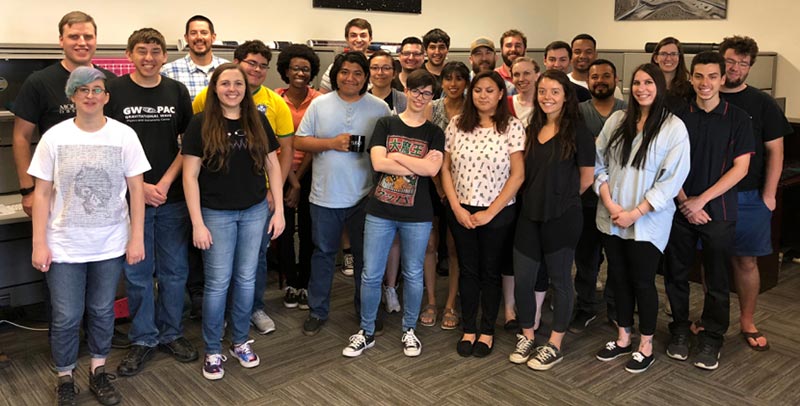
More than $500,000 in new grant funding from the National Science Foundation is giving Cal State Fullerton’s gravitational-wave scientists an astronomical boost for their groundbreaking research on the cosmos.
The “Collaborative Research: The Next Generation of Gravitational Wave Detectors” project is receiving about $211,000 in funding to support work for conceptual designs of the next-generation of gravitational-wave detectors that will succeed the Advanced Laser Interferometer Gravitational-Wave Observatory (LIGO) detectors. The project funds U.S. participation and charts the vision for the international effort to advance gravitational-wave science.
“Today’s gravitational-wave observatories are just the beginning, just as Galileo’s telescope was the beginning of observing the universe with light,” said Geoffrey Lovelace, associate professor of physics.
“As modern telescopes are much more powerful than Galileo’s, the next generation of gravitational-wave detectors will show us so much more of the universe than our current detectors can. This new project will give us answers to questions in physics, astrophysics and cosmology that are out of reach today.”
Lovelace, along with colleagues Jocelyn Read and Joshua Smith, and student researchers in CSUF’s Gravitational-Wave Physics and Astronomy Center, are involved with the project. The researchers are collaborating with Massachusetts Institute of Technology, Caltech, Syracuse University and Pennsylvania State University.
“As these new gravitational-wave instruments with improved sensitivity are able to look out even farther across the universe, black-hole and neutron-star mergers will map out the history of our universe to help scientists understand the formation of galaxies, stars and planets within it,” added Read, an astrophysicist and associate professor of physics.
Beginning in 2015, second-generation detectors observed gravitational waves for the first time, giving scientists a new sense to observe the universe. The physicists and their students played key roles in discoveries of gravitational waves in 2015, 2016 and 2017. Read and her students were part of the first discovery of gravitational waves from neutron stars in 2017.
Smith, professor of physics and Dan Black Director of Gravitational Wave Physics and Astronomy, is leading a separate project on “RUI: Improving LIGO Optics and Data Quality to Increase the Rate and Accuracy of Gravitational-Wave Observations.” The National Science Foundation grant is expected to total nearly $300,000, with first-year funding of about $104,000.
For the “Next Generation of Gravitational Wave Detectors” project, Read and her students will take the lead in identifying questions about neutron-star structure that third-generation detectors will answer. Lovelace and his students will lead a similar study to identify and assess what third-generation detectors will be able to tell scientists about gravity under the most extreme conditions. He currently is on sabbatical at Caltech for his study on “Solving Einstein’s Equations on Supercomputers in the Era of Gravitational-Wave Astronomy,” which ties in with the new CSUF grant project.
Meanwhile, Smith and his students will focus on a study about what requirements different noise sources will place on third-generation detector designs, including on lasers, optics and control systems.
“This project will help to improve LIGO optics and data quality to boost accuracy of gravitational-wave observations,” pointed out Smith, who in spring will be on sabbatical at the Albert Einstein Institute in Germany working on advanced optics.